The next gen of knitwear: Behind the wave of crochet-mad followers hooked on Beth Willis’ creations
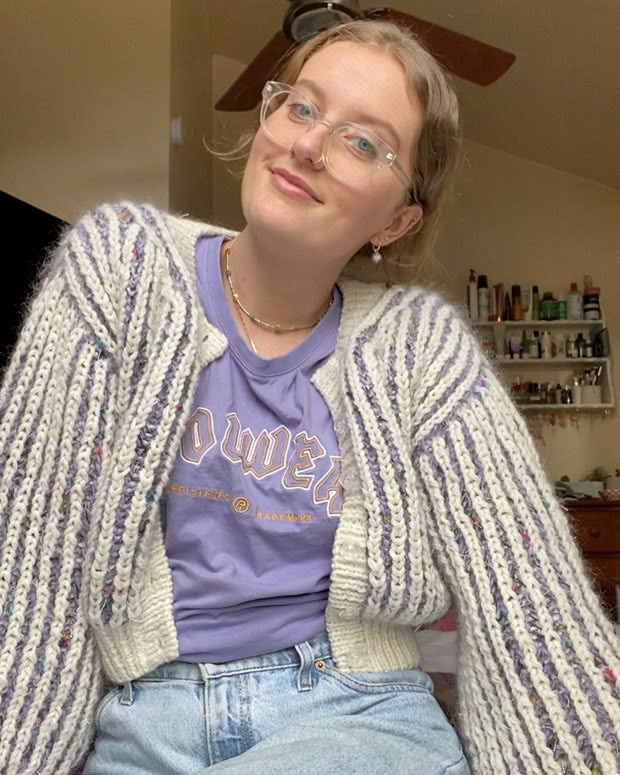
This master’s student is reviving a colourful 1970s craft — one crocheted daisy earring at a time.
Words: Nicole Barrett
It’s not unusual for Beth Willis’ supermarket trips to take slightly longer than average. She’s often stopped by shoppers admiring her colourful crochet creations.
“Gosh, who’s doing your hand knitting for you?” one woman asked recently, eyeing her jumper and assuming Beth was keeping her grandmother busy.
“It’s always funny to tell people it’s me,” says Beth.
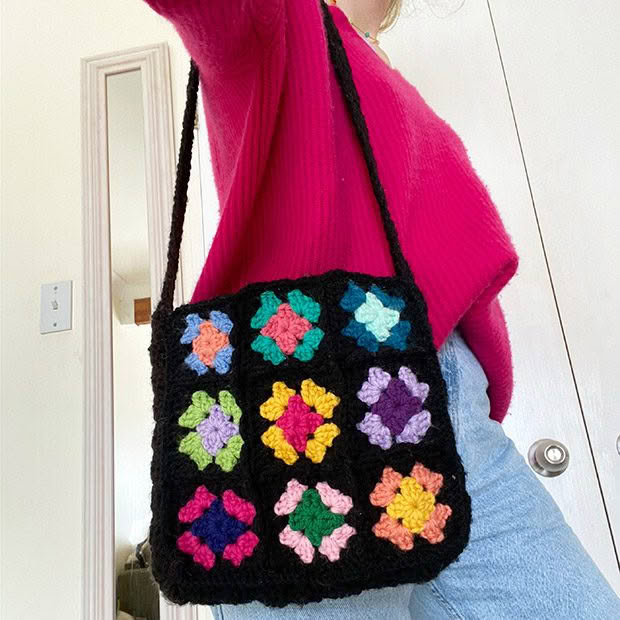
This young woman, a master’s student at Auckland University of Technology, is passionately reviving 1970s-style crochet in her free time. Wool earrings shaped like daisies hang from the 22-year-old’s earlobes, granny squares have piled up in her bedroom and her crochet hook might as well be a permanent extension of her hands (they’re not often still).
“I got the itch after watching a YouTube video one day on how to make reusable crochet face pads. I’d just finished my degree and spent about an hour in Spotlight poring over all the yarn colours. I couldn’t decide,” she says.
When her undergraduate criminology and psychology studies came to an end in November 2019 she had a confronting moment. “I’d been spending day in, day out studying, and I didn’t prepare myself for the end of my degree. Finally, when I finished my exams, it was ‘Well, now what do I do?’”
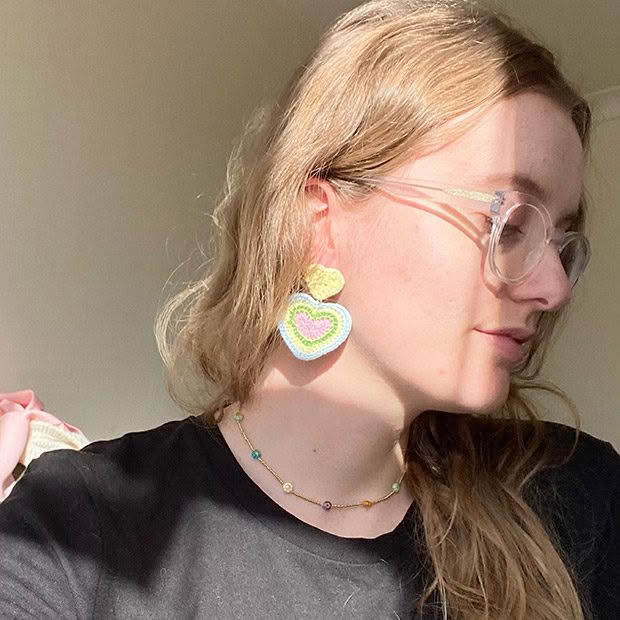
Double heart drops worn by Beth.
Beth was torn between studying art or science in her final year of high school where she’d been just as happy balancing chemistry equations as she was painting portraits. Criminology was a happy medium between the arts and science. “It was daunting and scary to finish, because I’d never planned beyond university. I still had a drive to be creative.”
With a ball of yarn and a new crochet hook, Beth crafted her first reusable face pad. She was hooked. Thankfully, she managed to get her hands on plenty of wool through her mum’s business, an Auckland-based company that helps the elderly declutter and relocate.
“I realised: ‘Why am I buying yarn new when I could be getting it second hand?’ Now when my mother has a customer clearing out their crafts’ closet, I offer to buy all their yarn.”
With enough yarn on her hands for multiple projects, Beth experimented with granny squares. “They’re a crochet classic, so I was making those left, right and centre.” Christmas presents for her family that year consisted of crochet face pads, loofahs and soap savers.
View this post on Instagram
It was grooving at Gisborne’s Rhythm and Vines festival that summer Beth realised the potential to turn her hobby into something she could sell. A navy water-bottle holder she’d eagerly crocheted on Christmas day proved popular with her fellow festival-goers.
“I hydrated my friend group for the whole festival, I was basically the water girl, and people came up to me saying they needed one. The festival was selling lanyard holders and I realised I could make a water bottle holder myself.” The holder was battered by the end, but it had done the trick.
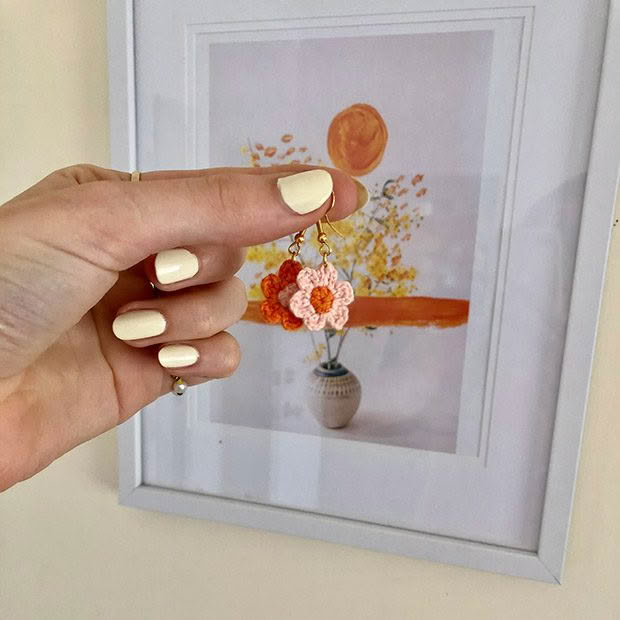
She picked up a summer psychology research role at AUT in the new year (2020), researching conspiracies and why people might ascribe to them. Beth struck the balance between academia and creativity she’d longed for by crocheting in between researching, and on her daily bus commute to and from the campus.
Turning her hobby into a budding business, ‘Made By Beth’, happened organically around this time. “I was experimenting with making crochet daisies, and I turned them into earrings and posted some on Instagram. Friends and family started asking if they could buy them.” At that point, Beth realised a girl needed only so many pairs of crochet earrings so selling them made sense.
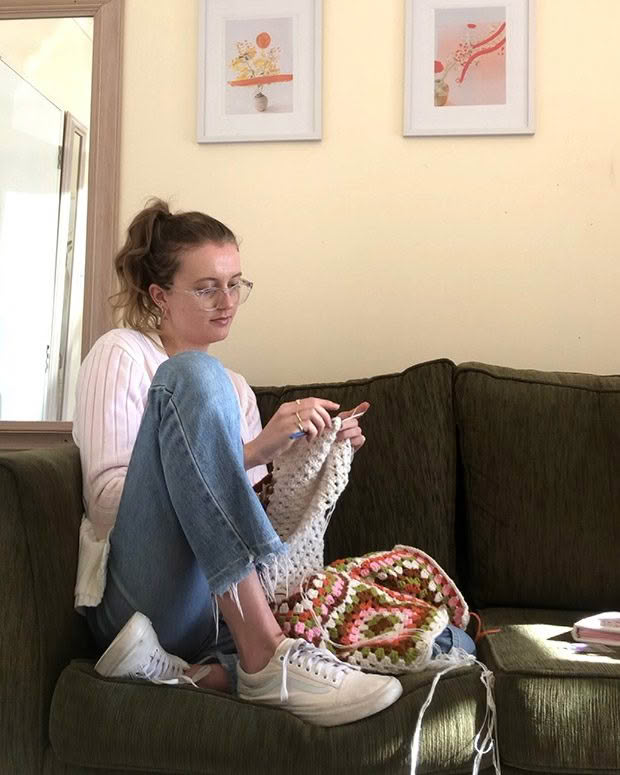
She sees a renewed passion for retro crafting is part of a push-back on fast fashion. “I see a love for revitalising old ways of doing things. People are seeing others pick up crafts, especially online. It’s about being sustainable, but it’s also about it being fulfilling to make things.”
The pandemic offered plenty of time for crafting. “I’ve always been the nanna of my group, the one at home knitting and crocheting. And I enjoyed a lot of lockdown because I could be creative.”
She made more of her signature crochet earrings, then bags, vests, sweaters and even a bikini top. Suddenly, orders were coming in from people she’d never met, there were overseas orders, then commission requests. Currently there’s a six-week waitlist.
View this post on Instagram
“It’s been a struggle trying not to make it a full-time business, because it can suck the fun out of it and I’m also passionate about my studies.” Her research role led her to a master’s thesis examining wealth inequality and privilege. Pairing a craft with academia keeps her grounded, she says.
There are more than 2000 eager eyes watching her creations come to life on her Instagram, yet Beth tries not to let that influence what she makes. “I have to make things I’m enjoying, if I’m making things because it’s what I think people want to see, it doesn’t have that same authenticity.”
Her most recent crochet venture is creating patterns for other crafters, the first pattern for a crocheted hot water bottle. She put a call out on her social media for pattern testers, and was surprised when close to 100 messages landed in her inbox. Eight testers are currently crocheting up the pattern, three of them in Germany, Italy and Australia.
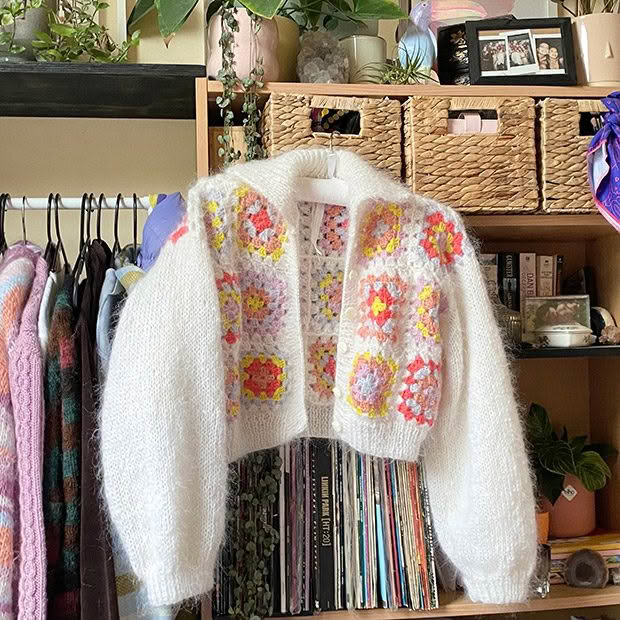
Beth is a regular on Trade Me trawling for gems including quality mohair. Second hand materials are always used where possible. Yarn and wool is regularly sourced from op shops, as well as buttons. “It’s a bit like a treasure hunt. I found this amazing wool once that was this beautiful mohair, and all wrinkled. You could tell it had been used before on another jumper then unraveled.” she says.
Yarn stored under her bed at her Pakuranga flat piled up so high it spilled out across the floor. Beth’s since set up a crafting studio in her old room at her mum’s home. Wools, yarns, patterns and bag linings are stacked in her childhood wardrobe. “In my studies, we’ve been talking about this idea of languishing, and being anchorless, especially in lockdown. But I can’t relate, because I have this passion I can take with me anywhere, and I’ve always got something to work towards, these little mini-wins.”
Mastery, mindfulness and mattering is what counteracts those feelings, Beth says, and coincidentally, crocheting ticks each of those off the list.
WHAT IS CROCHET?
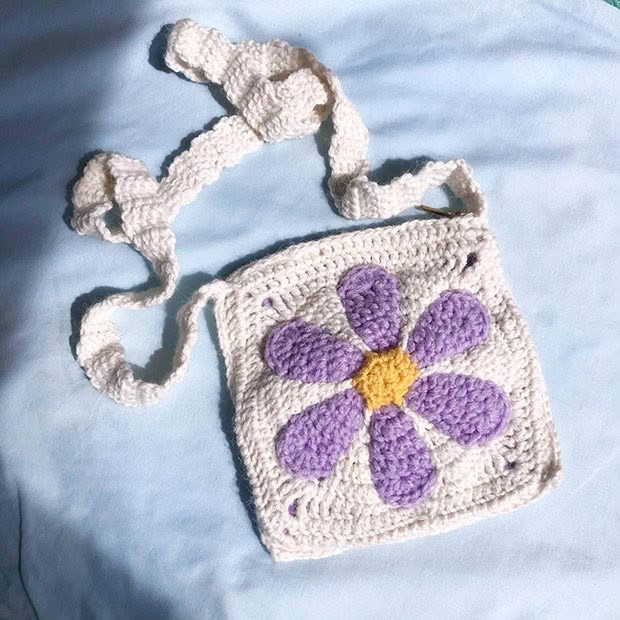
Crocheting uses a hook to interlock loops of yarn, wool or thread. The name comes from the French term ‘croche’, which means ‘small hook’. Crochet boomed in the 1960s and 1970s when granny squares were in vogue, often forming the basis of mini skirts, dresses and bell-sleeved shirts.
Find Beth at @madebybeth_
MORE HERE
Why Ōtāhuhu artist Lissy Cole is hooked on colourful crochet (and owns the word fat)
DIY: Make a classic pompom beanie with this free knitting pattern

